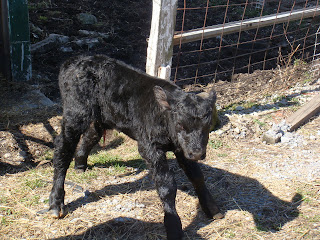
Today, I want to put the focus on my readers, and prospective readers. I am curious to know what topics you all are interested in learning more about. Write in suggestions, comments, questions, ideas, or share your knowledge of topics with us. We are all eager to learn more, and you can help me with your feedback. Please send back a list of at least 5 topics you would be interested in, and I will do the research and post your topics.

When the weather starts getting warm, and the grass greens up, people want to rush outside and start planting. When in doubt, go to the Farmer's Almanac! The Farmer's Almanac is a very trustworthy guide for planting. The almanac follows the moon calendar. If you are wondering what it means to garden according to the moon, here is some more information:
"Gardening by the phases of the moon is a technique that can speed the germination of your seeds by working with the forces of nature.
Plants respond to the same gravitational pull of tides that affect the oceans, which alternately stimulates root and leaf growth. Seeds sprout more quickly, plants grow vigorously and at an optimum rate, harvests are larger and they don't go to seed as fast. This method has been practiced by many for hundreds of years, and is a perfect compliment to organic gardening because it is more effective in non-chemically treated soil.
Lunar planting is influenced by two factors:
The lunar phase controls the amount of moisture in the soil. This moisture is at its peak at the time of the new and the full moon. The sun and moon are lined up with earth. Just as the moon pulls the tides in the oceans, it also pulls upon the subtle bodies of water, causing moisture to rise in the earth, which encourages germination and growth. Tests have proven that seeds will absorb the most water at the time of the full moon.
The astrological signs of the zodiac correspond with the elements of water, earth, fire, or air. Each plant has a preference for what elemental sign it is planted in. The best time for starting seeds of most annual plants is during the fertile water signs, but root crops like earth signs, and flowers especially like the air sign of Libra. The moon sign changes every few days."(©2000-2009 Divine Inspiration Publications)
April 2010
4th-5th Barren Days. Do No Planting.
6th-8th Favorable Days For Planting Beets, Carrots, Turnips, Radishes, Onions, And Other Root Crops.
9th-10th Excellent Time To Kill Weeds, Briars, Poison Ivy, And Other Plant Pests.
11th-13th Favorable Days For Planting Root Crops, Extra Good For Vine Crops. Set Strawberry Plants.
14th-15th Poor Planting Days. Break Ground Or Cultivate.
16th-17th Favorable For Planting Beans, Corn, Cotton, Tomatoes, Peppers, And Other Above Ground Crops.
18th-19th Poor Days For Planting, Seeds Tend To Rot In Ground.
20th-21st Plant Tomatoes, Beans, Peppers, Corn, Cotton, And Other Above Ground Crops On These Most Fruitful Days. Plant Seedbeds. Start Flower Gardens.
22nd-25th Grub Out Weeds, Briars, And Other Plant Pests.
26th-28th First Two Days Good For Planting Corn, Melons, Squash, Tomatoes, And Other Above Ground Crops. Last Day Favorable For Planting Root Crops. All Days Favorable For Sowing Grains, Hay And Fodder Crops, And For Planting Flowers
29th-30th Good Days For Planting Beets, Carrots, Radishes, Turnips, Peanuts
, And Other Root Crops. Also Good For Cabbage, Cauliflower, Lettuce, Kale, Celery, And Other Leafy Vegetables. Start Seedbeds.
( ©2010 Almanac Publishing Co.)
Now you know a little more about how the Farmer's Almanac works, and why it can be helpful when you are questioning the weather, and if you should plant. Pass the word on to your friends and neighbors. We would love to hear back from you if any of these tips helped you during this planting season!



















